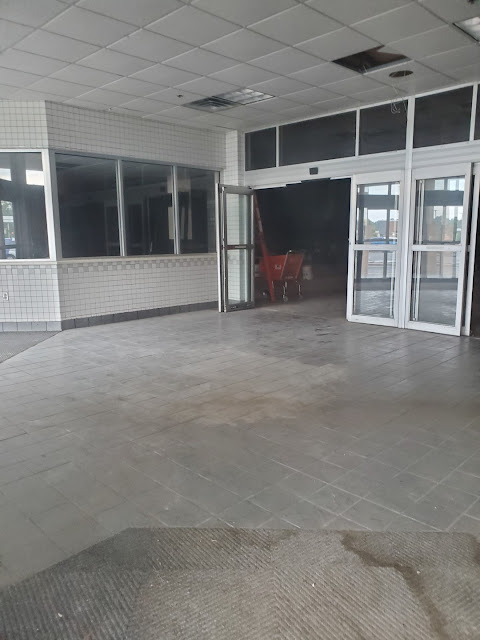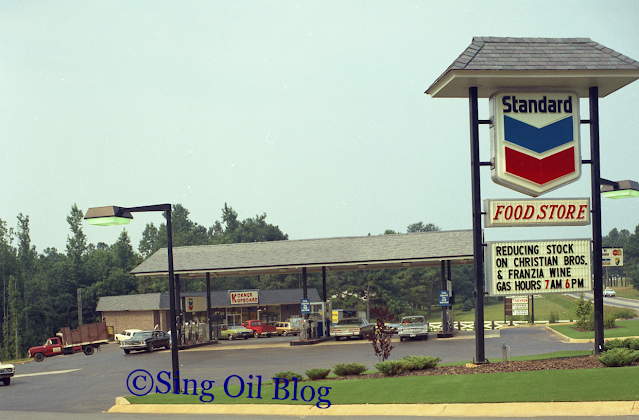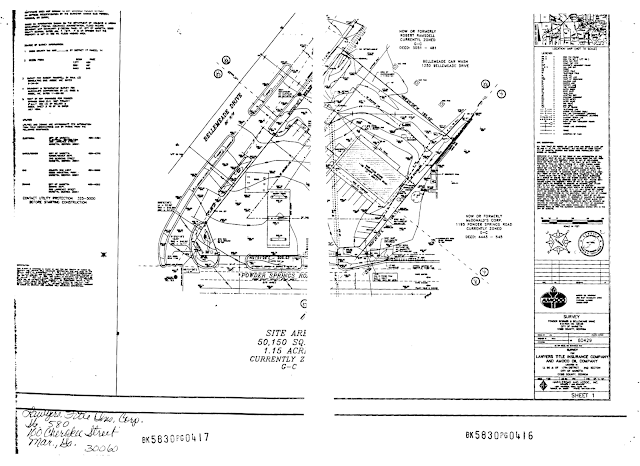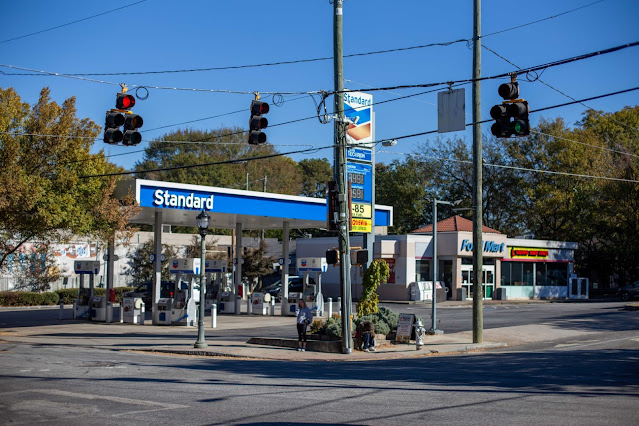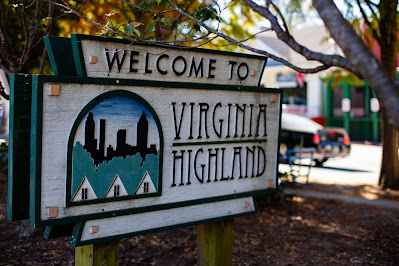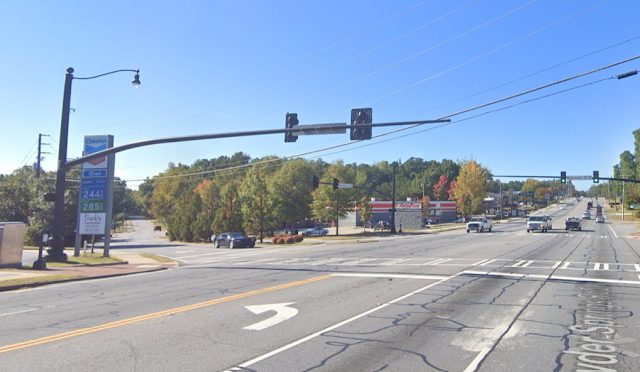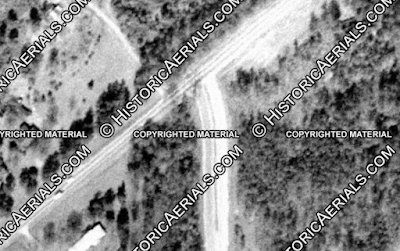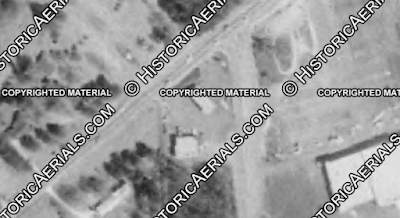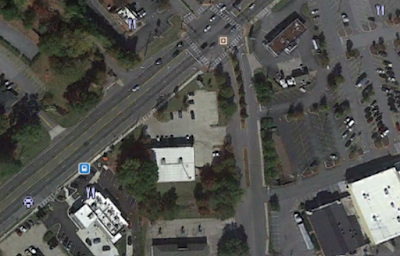Statesboro's Failed Supermarkets
Former Publix #460
University Commons
600 Northside Drive East
Statesboro, GA 30458
Welcome to the 'Boro! You might be asking yourself "why is he back from his holiday hiatus?" and the answer is that I couldn't resist publishing one more post before 2023 was a mere memory. As you can see, this is the well-deserved eighth entry into my When Publix Waves Goodbye series; furthermore, today's post is a bit outside of my typical territory, but the specimen we'll examine today was well worth the trip (it helps that work sent me to the area). Let's just say that this store has perplexed The Albertsons Florida Blogger and me both to the point where I figured I needed to take action . . .
This story begins on January 10, 1994, when Publix #460 opened as the sixteenth store in The Peach State and the first store of 1994. Things were looking up for the Lakeland-based company as it made a splash in Georgia several years earlier with stores #412 in Savannah & #33 in Marietta; the company was also looking to fill out smaller markets in the region such as Valdosta (#430), Brunswick (#431), Albany (#450), & Athens (#451). In total, Publix cut the ribbon on 22 Georgian locations that year which continues to hold the record for the most stores the company has ever opened in the state in a calendar year. Publix' aggressive entry into the market turned heads and smothered weakened competition, but any war doesn't come without its casualties.
Eight of the twenty-two in the Class of '94 no longer grace this Earth for reasons including demographic changes (#477), direct replacements (#476), or not-so-direct replacements (#471). All of those stores racked up at least a decade of service – except for good 'ole #460. Even the 2002 Publixity stunt of #790 or the duds of '03 (including #278, #283, #860, & #875) lasted six years before folding; however, Statesboro's first Publix closed its doors for good by 1999 without replacement, ending what may well be the shortest-lived new construction location to have ever existed.
Moreover, a store that opened and closed in the 1990's can only mean one thing: it had Wavy Pastels for its entire life. What adds to the intrigue is how this store has remained vacant ever since Plato left Bulloch County. Do you catch my drift?
We'll just say that AFB was thrilled when I first shared my photos of this store with him.
Despite me being in this hobby for close to three years now, I still get a bit spooked on occasion when photographing stores. I knew I had to find a way to blend in while glancing through the windows of the forgotten supermarket, so I naturally decided to dine at the Mexican restaurant next door. The food may have tasted like essentially every other Mexican restaurant I've been to in the rural Southeast, but is consistency ever a bad thing?
After my supper, I placed my head against the sliding glass doors and was greeted by . . .
An empty vestibule.
While I was hoping to see a Wavy Pastel wonderland, I was probably left with more questions than I started with: Why were those traffic cones here? Why has the store remained vacant this long? Are there still Wavy Pastels signs on the walls? How could I tour the inside of this dang place?!
I wish I could provide more concrete answers to all of the above, but the best I can do is tell you that this store still remains a large mystery.
GeorgiaPubDude was able to narrow this location's closure down to sometime between 1995 and 1999: the corresponding pharmacy license was last renewed on June 7, 1995, and had an expiration date of June 30, 1999. Bulloch County otherwise doesn't have digitized newspaper databases online from the 1990's, and Publix doesn't exactly publicize its store closures. I've heard rumors that the reason this store closed so early on was due to its distant proximity to Publix' distribution centers in Jacksonville and Atlanta in conjunction with the low density of other Publix stores in the area. These factors allegedly made it too costly for the chain to continue to operate the store, forcing it to shutter.
 |
| The Tallahassee Democrat (Newspapers.com) - August 31, 1997 |
Update: Thanks to research by The Seaway Project, we now have a better idea of when this store closed. The ad above from The Tallahassee Democrat above is the last item on Newspapers.com to mention the store, and the same flyer seemed to be used for all stores in the Jacksonville Division.
 |
| Screenshot courtesy The Seaway Project (Facebook) - December 25, 2023 |
While the Labor Day 1997 circular may have been the last one to feature #460, it looks like Publix officially announced the store would close on April 1st, 1998. That's quite the cruel April Fool's joke! Another former employee confirmed that the store only survived three-four years, adding to this crazy story.
Let's just hope that history won't repeat itself. On December 14, 2022, the grocer opened the doors to Statesboro's second Publix, ending the over two decade hiatus. Is it fair to say that the new store #1733 across town ultimately served as #460's replacement?
Regardless, this 47N still looks like an old Publix from the outside, and probably still looks like one on the inside, too. Does anyone want to call for a property tour?
Food World (Homeland) #792
Former Food Lion #443 / Harveys #2374
603 Northside Drive West
Statesboro, GA 30458
Jumping to the north side of town, we'll take a brief look at one of Statesboro's five Food Lions. This location was particularly interesting to me since all of the Google Maps photos show it still sporting the nearly-extinct Harveys Grid interior. Unfortunately, it didn't take long upon my arrival for me to realize Homeland had already remodeled the store earlier this year, ruining my hopes and dreams of photographing the package in the 'Boro. I was pissed.
Oh well, at least I could still see the original Food Lion sign post and Deli / Bakery lettering.

|
| Courtesy Charles Burgess Jr (Flickr) - Harveys #2374 - June 22, 2013 |
Charles Burgess has a nice photo on Flickr of how this store looked as a Harveys, along with a shot of the road sign back in 2013. At least I was able to photograph the old Bruno's interior in the East Dublin Food World the following day as a consolation prize.
Former Winn-Dixie #147
Gentilly Square
602 Brannen Street
Statesboro, GA 30458
Our final stop of the day will be Statesboro's former Winn-Dixie. This store is located just behind University Commons and the Statesboro Mall and seems to have suffered the same fate as the former Publix. According to Charles Burgess, this store shuttered in 2005, following Winn-Dixie's first bankruptcy, and appears to have been vacant ever since.
The Bulloch County Property Records indicate this building was built in 1970 with an effective year built of 1985. I'm personally leaning toward the latter since this store has a quintessential 1980's WD façade, but you can never know for sure with county property records alone. I'm also going to guess that The Beef People rearranged the entryway for this store in the mid-1990's as part of a Marketplace remodel.
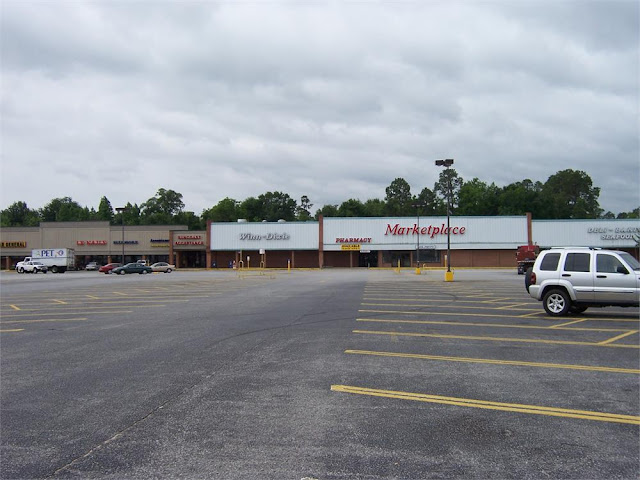
|
| Courtesy Bulloch County Property Records - Former Winn-Dixie #147 |
Much to my surprise, the Bulloch County Property Records still have a vintage photograph of the building from over 10-years ago. Even when Google Street View fails me, the property records can come to the rescue.
The outside may have been painted over, but let's see if there is anything interesting hiding inside . . .
Oh, would you look at that–Rose & Teal Marketplace! Had I not already photographed active stores with this package, I probably would have been a bit giddier, but it is cool to see a store that has been vacant for close to 20-years still holding on to all of its decor. This reminds me a bit of the old Thomasville Food Lion, except a little less creepy.
On top of the signs still being on the walls, this store also used the "cheaper" variant of Rose & Teal Marketplace rather than the deluxe version that I've come across more often. It seems like the cheap version was primarily used in 1980's stores that were expanded and upgraded to the Marketplace format during the mid-1990's.
The next tell-tale indication that this store was built in the 1980's is the faux skylight fixture over the registers. WD swapped to a similar structure with solid surface of dropped ceiling tiles in the 1990's.
I do wonder why somebody went through the effort to move the old check stands out of the way, only to leave them piled up on either side of the old space. Maybe this was to provide a lane for forklifts to move around? The building seems like it is just used to store random odds and ends now, so I'm not exactly sure what is going on here. I'd just advise against moving those buckets and cones because they probably cover the old electric connections for the registers.
I tried to take as many pictures as I could, but the window glare was killing me! Even without the glare, though, it was still difficult to see any signs besides the one for the old meat department on the far wall. I also have a feeling that those Christmas decorations and curtain rods (?) weren't left by The Beef People.
It looks like I shifted a bit to the left to take this shot, but we otherwise see the same stuff. There was something interesting that caught my eye though . . .
Okay, I'll admit that I cheated and saw Charles' 2013 picture of this sign before I drove up, but I was still thrilled to see this old pharmacy sign hanging 10-years later! I thought this sign was so cool! The fact that I've never seen one in an active Winn-Dixie makes me believe the chain got rid of these shortly following the bankruptcy; at least this one survived. It still seems odd that this was hanging above the old cart storage area which leads me to believe this store's pharmacy used to be in the area that's often home to seasonal displays in "modern" stores. I'd love to be able to save some of this old signage!
It looks like this store was first issued a pharmacy license on June 16, 1997, which leads me to believe that's when it was formally expanded into a Marketplace; the last renewal was on June 9, 2005.
Turning to the left, we also find the old space for the customer service counter along with a buggy full of junk. (I initially thought the buggy came from Publix, but it looks like a different model than the company uses).
Back out front, we find the shopping center sign which seems like it has seen better days . . .
. . . and we find an old Sears hometown store sign posted just outside the mall across the street.
I also originally forgot to mention Retail Retell's Flickr series on the Statesboro Office Depot located just across the street from former Publix #460 and the Statesboro Mall.

Current and Former Statesboro Supermarkets
All in all, Statesboro has several interesting retail sites with many stories to tell. While this tale may be over, I wouldn't be surprised if we find ourselves back in the area later on down the line. I hope you enjoyed this little adventure, and I'd like to take this time to wish everybody a Merry Christmas and a Happy New Year!
Until next year,
- The Sing Oil Blogger




